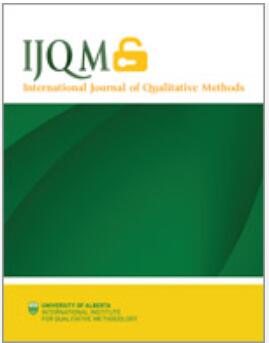LGBT+平权舞者中的性别与性行为表演:作为一种探究方法的照片启发
IF 3.8
2区 社会学
Q1 SOCIAL SCIENCES, INTERDISCIPLINARY
引用次数: 0
摘要
在它的古典形式中,交际舞是由异性伴侣组成的,表现出保守的男性气质和女性气质。在学术和实践中,对竞技交际舞(也称为Dancesport)的经典形式的规范性关注排除了LGBT +舞者在主流之外练习这项运动的生活叙述。平等体育舞蹈就是这样一个例子,舞者以不同的伙伴关系类型表演,并采用较少性别隔离的舞蹈角色和动作。作为对英国平等舞蹈体育场景进行的更广泛的民族志研究的一部分,我利用深入访谈中嵌入的照片启发练习,展示了该策略如何为理解跨性别、性别和性行为分类的男性和女性的酷儿理论框架的出现提供了基础。照片引出提供了四个关键的机会,即(1)调用新的酷儿知识,模糊了现有舞蹈学术研究中男性和女性概念的二元划分,(2)促进了更平等的研究人员/参与者关系的发展,(3)使舞蹈生活经历的情感,详细和流畅的叙述成为可能,(4)将受访者定位为舞蹈观众,激发对社区的思考。本文最后提出了三个建议,以协商在舞蹈研究中使用照片引出技术的陷阱。首先,研究人员需要认识到照片引出和实践对参与者的敏感性所提供的包容性的局限性。其次,将照片与视频等其他视觉方法相结合,可以使研究人员利用不同视觉工具的优势,激发对更广泛话题的讨论。第三,在使用该方法之前,研究人员需要培养应对消极谈话的心理力量,以更全面地了解参与者的情绪和动机,并作为对他们的责任。本文章由计算机程序翻译,如有差异,请以英文原文为准。
Gender and Sexuality Performances Among LGBT+ Equality Dancers: Photo-Elicitation as a Method of Inquiry
In its classical form, ballroom dancing constitutes heterosexual dance couples enacting conservative forms of masculinity and femininity. A normative focus, both in scholarship and in practice, on the classical form in competitive ballroom dancing (also known as Dancesport) excludes the lived narratives of LGBT + dancers practicing the sport outside of the mainstream. Equality Dancesport is one such example, with dancers performing in diverse partnership typologies and adopting less gender-segregated dance roles and movements. Drawing on the photo-elicitation exercise, embedded within in-depth interviews, conducted as part of a broader ethnographic study on the equality Dancesport scene in the United Kingdom, I demonstrate how the strategy informed a ground-up emergence of a queer theoretical framework for understanding masculinities and femininities across the sex, gender and sexuality categorical divides. Four key opportunities afforded by photo elicitation are identified, namely (1) invoking new queer knowledge which blurs the binary divide in how concepts of masculinities and femininities are investigated in existing dance scholarship, (2) facilitating the development of more egalitarian researcher/participant relationships, (3) enabling affective, detailed and fluid narrations of lived experiences of dancing, and (4) positioning interviewees as dance spectators and inspiring reflections on the community. The paper concludes with three recommendations for negotiating the pitfalls of using a photo elicitation technique in dance studies. First, researchers need to recognise the limits of inclusivity offered by photo elicitation and practice sensitivity towards participants. Second, integrating photographs with other visual methods such as videos can enable researchers to leverage the strengths of different visual tools to inspire talk about broader topics. Third, before using the method, researchers need to develop mental strength for coping with negative talk, to achieve more holistic understanding of participants’ sentiments and motivations and as a duty of accountability towards them.
求助全文
通过发布文献求助,成功后即可免费获取论文全文。
去求助
来源期刊

International Journal of Qualitative Methods
SOCIAL SCIENCES, INTERDISCIPLINARY-
CiteScore
6.90
自引率
11.10%
发文量
139
审稿时长
12 weeks
期刊介绍:
Journal Highlights
Impact Factor: 5.4 Ranked 5/110 in Social Sciences, Interdisciplinary – SSCI
Indexed In: Clarivate Analytics: Social Science Citation Index, the Directory of Open Access Journals (DOAJ), and Scopus
Launched In: 2002
Publication is subject to payment of an article processing charge (APC)
Submit here
International Journal of Qualitative Methods (IJQM) is a peer-reviewed open access journal which focuses on methodological advances, innovations, and insights in qualitative or mixed methods studies. Please see the Aims and Scope tab for further information.
 求助内容:
求助内容: 应助结果提醒方式:
应助结果提醒方式:


